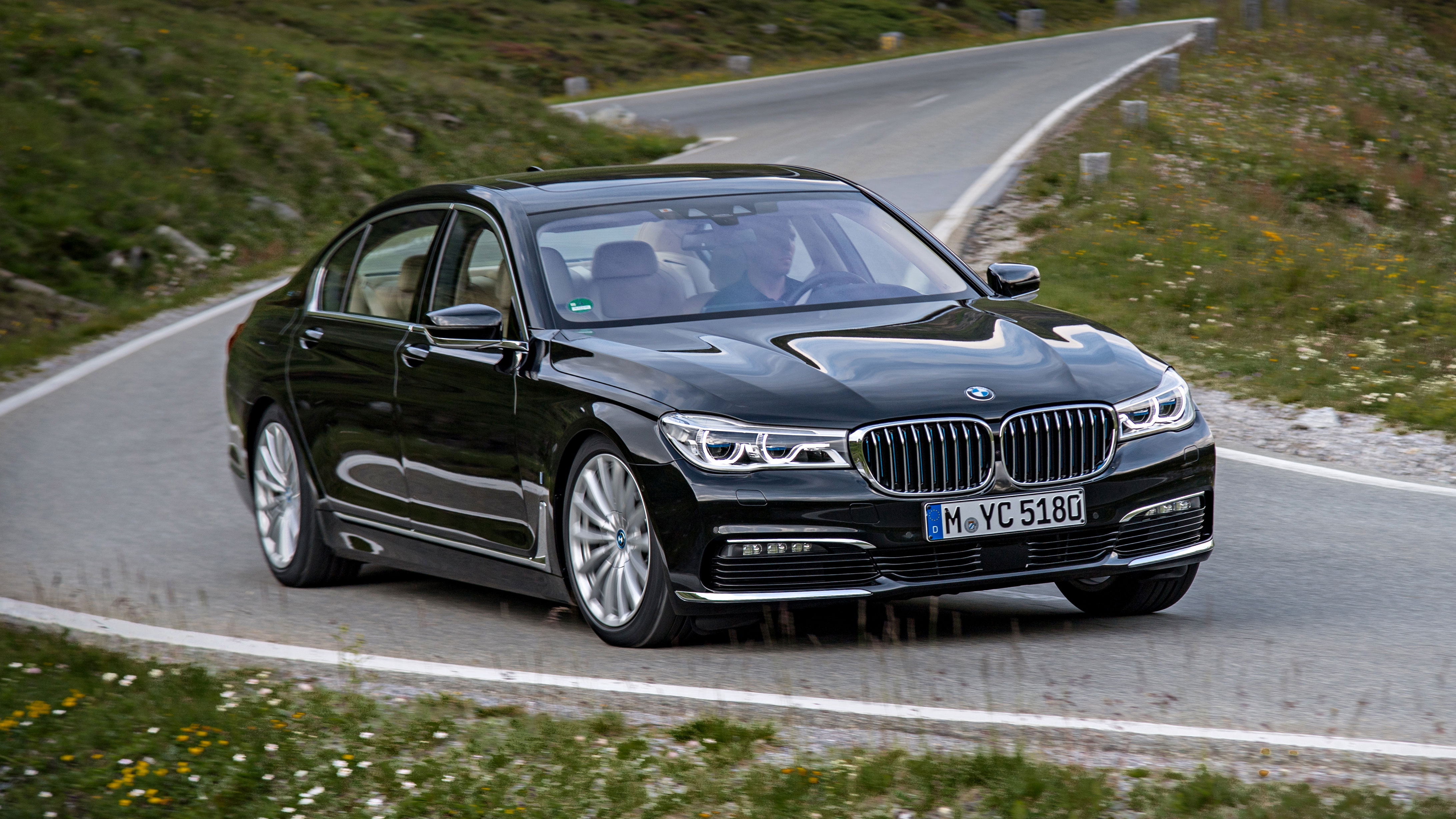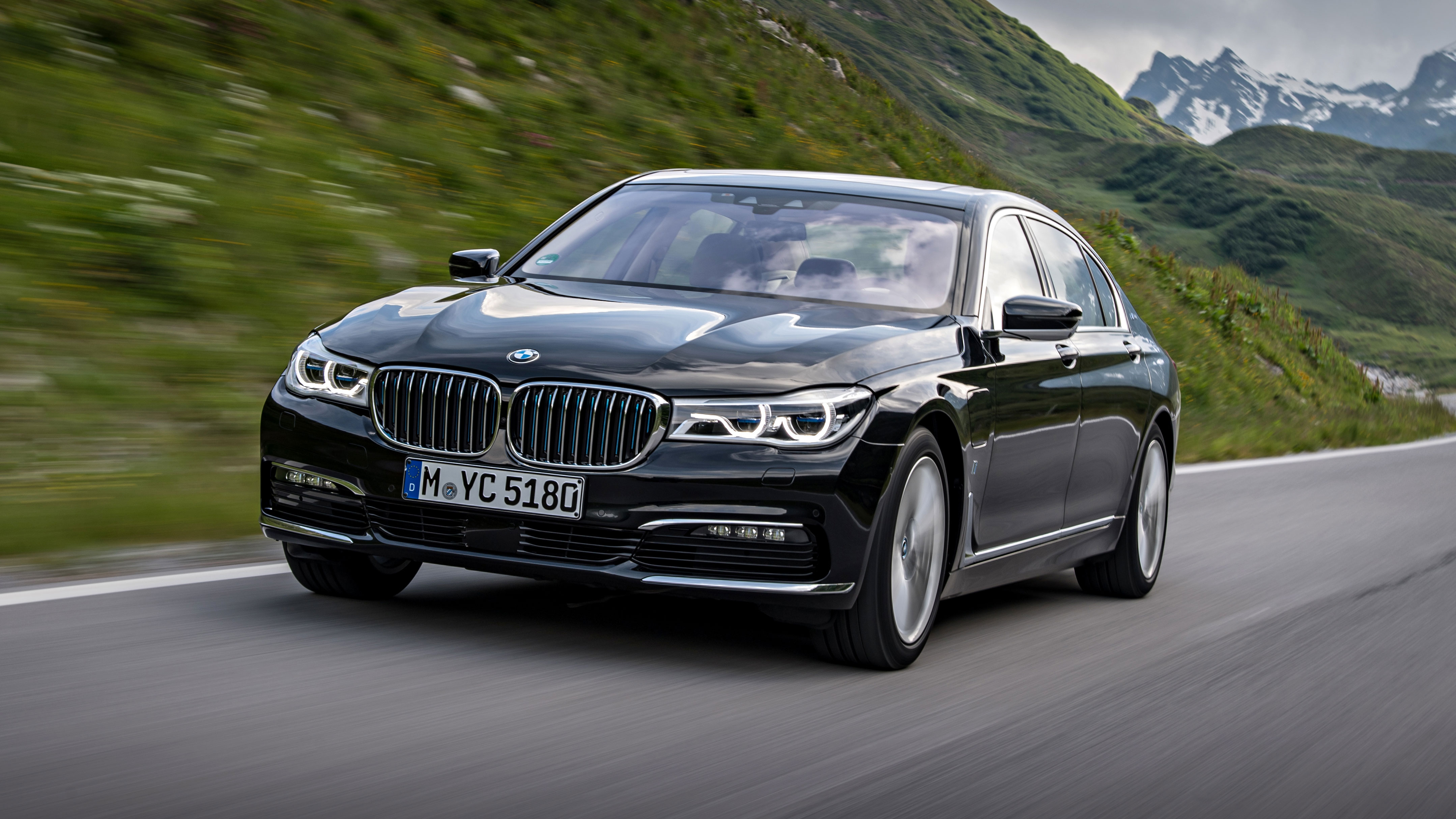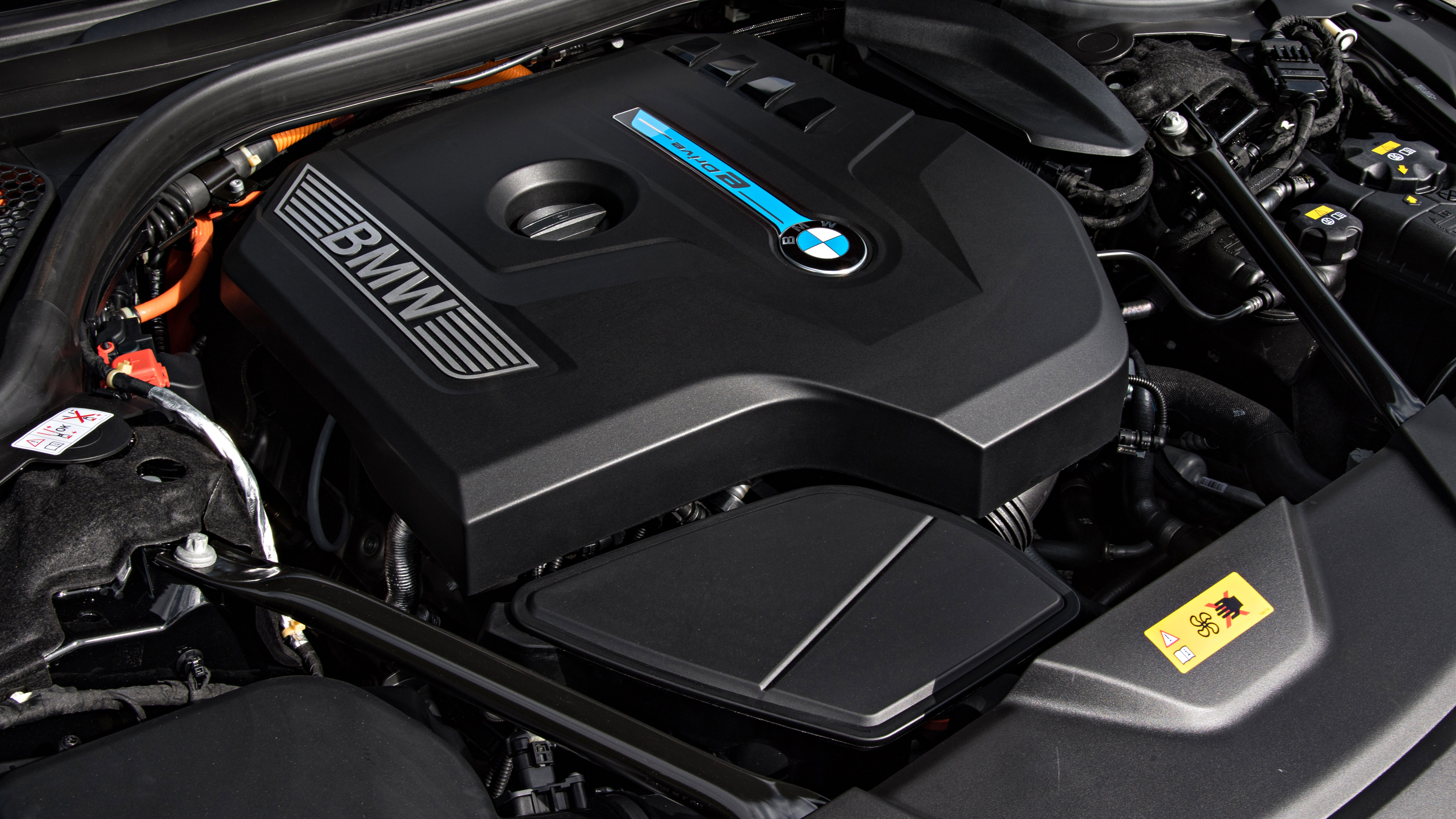
Review: the BMW 740e iPerformance
A four-cylinder BMW 7-Series? Downsizing gone a bit mad huh?
Yes it is just a 2.0-litre, but look at it another way. It's the half-way house between a luxo-barge and a BMW i8. Remember, the i programme has been the incubator for BMW for carbonfibre, for electrical and hybrid drive, for various connected services (charge points, parking, pre-heating or cooling the cabin remotely), and even for laser headlights.
OK I know about the carbonfibre bit, where lengthy beams of the stuff replace some of the main steel structural sections in the new 7-Series' body.
Oooh you have done your homework.
Why thank you. What about the drivetrain?
Yes, there's a 2.0-litre four-cylinder petrol engine, BMW's most powerful, at 258bhp. Between the flywheel and the eight-speed auto is a fat disc-shaped electric motor, so the total system power is 326bhp. Unlike cars where the electric motor is on a separate axle on single-speed gearing (i8, NSX, Volvo T8, 918, among others), the electric motor drives through the 740e's gearbox, which means its full power is available right across the speed range, rather than falling off as speed rises.
The engine always operates with the motor, but there's a clutch between the two, so the motor can drive the car with the engine sleeping. Under those electric-only circs, the motor is rated at 83kW or 111bhp. Enough to get you to a motorway cruise. Since it's a plug-in hybrid, it can go for an EU-rated 28 miles, or real-world 20, before the battery is drained.
How does it go?
In the electric mode, pretty silently, and if you ask for more performance than it can give the engine simply wakes and adds more. But schmoozing around town it's blissfully quiet - my back-seat passenger fell asleep in no time.
In hybrid mode, the switching between engine-on and engine-off is pretty smooth too. But it aims to keep the engine running at low revs, and that means a tinkly vibration because it's a four.
Top Gear
Newsletter
Thank you for subscribing to our newsletter. Look out for your regular round-up of news, reviews and offers in your inbox.
Get all the latest news, reviews and exclusives, direct to your inbox.
Mash the throttle and the noise doesn't get any more pleasant. (Volvo's four-pot petrol T8 has the same issue.) But it certainly gets along well. There's lots of instant torque, and the sort of shove that'll go from 0-62mph in 5.4sec.
The alternative, the 740d non-hybrid diesel six, sounds nicer, but is much noisier in town running. Only in combustion's absence do you notice how loud it really is.
And economy?
As always with these PHEVs, it depends on how much of the energy is from the battery. In other words, how often you plug it in. In the official cycle, which is short trip starting from a full battery, it's 134.5mpg and 49g/km CO2. Which gives it a hilariously low 7% benefit-in-kind rating for company car tax.
If you don't ever plug in, like if you're on a long trip away from sockets, economy will be slightly better than a pure petrol 740i but not as good as a diesel 740d, admit the engineers responsible.
But if you plug in, things get better. I did a journey of 40 miles, across the rolling countryside near Munich. The car started out fully charged. Because the destination was in the navigation, it aimed to get me there with a depleted battery. Its strategy was to use the petrol for the faster parts of the trip, and electric in the suburbs and towns. It would also cut the engine when it knew we were approaching a speed limit, so it could coast in. Same for downhills. I drove briskly, because I like to. But not abruptly, so as my passenger remained asleep.
Anyway, it did 55mpg. It also drained 80 per cent of its available 7.4kWh of battery-stored energy. Make of that what you will.
Does the battery fill the boot?
Nope. Actually, it's the petrol tank that's squeezed around the rear suspension, and reduced to 46 litres. That's because the battery is ahead of it, under the back seat where the tank normally lives. Anyway, the boot itself is a bit shallow but perfectly acceptable.
The BMW engineers, because they live in Munich where everyone drinks beer, made sure that several standard fairly tall German beer crates would fit in. Have you ever been at the bar with BMW engineers? Hollow legs I tell you. Hollow legs.
Price?
As a short wheelbase RWD version, it starts at £68,330. Interestingly, you lengthen the wheelbase and add 4WD to make the 740Le xDrive at £74,880. I mention this because you can also have a diesel 740Ld xDrive for almost exactly the same money. Because the 4WD system uses a bit more fuel, BIK tax for this is 11 per cent. But for the diesel it's 27 percent. Of course list price is irrelevant except in working out the BIK, because these are all company cars acquired on leases, and the lease payment depends on depreciation, which is as yet unproven but predicted as slightly higher than the diesel, so the lease should be cheaper.
Enough accountancy mumbo-jumbo. What about the laser headlights? They sound evil.
Not evil. They don't actually aim lasers at the retinas of oncoming road users. Instead the lasers excite a lump of phosphorous which emit the ultra-bright light. More light than xenons or even LEDs, using much less power.
And this crazy name: BMW 740e iPerformance?
You'll have seen how the M Performance cars are on the way to M cars but definitely not there. iPerformance cars are on the way to i cars. At the moment the label attaches to four machines, all of them plug-in hybrids: 225e xDrive Active Tourer, 330e, X5 xDrive 40e, 740e. It will gradually spread across the range.
Featured

Trending this week
- Car Review
BMW 1 Series






